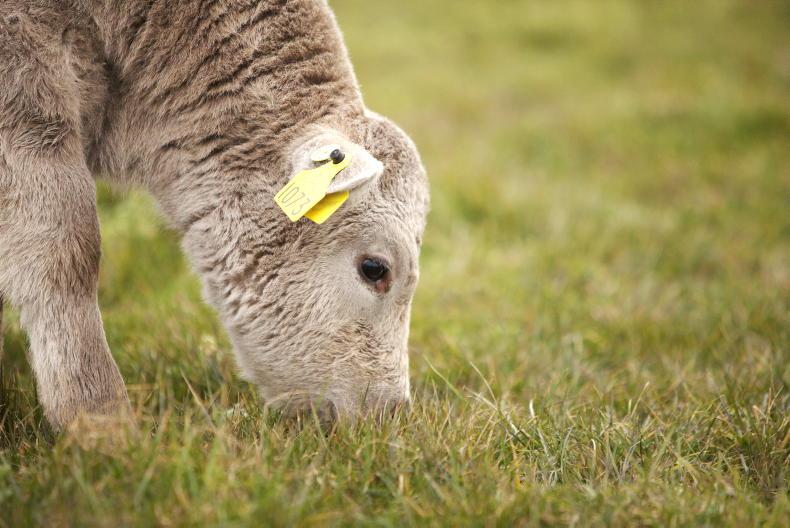Spring calving is in full swing on many suckler farms, which means another crop of calves for dehorning.
The earlier calves are dehorned, the better. Removing small horn buds is less stressful on calves and better suited to a dehorning iron.
Ideally, calves should be dehorned before they go out to grass. Once animals are turned out, dehorning is often overlooked.
Outlined are five tips to dehorning calves.
1. Always secure calves in a restraining crate
Restrain calves in a purpose-made crate. When properly restrained, calves cannot move their head. This makes it much easier to anaesthetise the calf and remove horn buds. There is also less risk of the calf getting burned.
Set the crate up in an area that is separate from the cow and therefore safe for the operator dehorning calves.
2. Make sure the iron is piping hot
When using a gas-heated dehorning iron, it needs to be hot to remove the bud and stop any bleeding.
So once the calf is restrained, start heating the iron, before freezing the horn nerve or clipping hair.
This gives plenty of time to make sure the iron is up to operating temperature. To check if the iron is hot enough, it should burn a continuous ring on a piece of wood.
3. Batch calves in groups and give an anaesthetic
Freezing the horn stops the calf experiencing pain or stress when dehorning. Never dehorn a calf without giving a local anaesthetic on both sides of the head.
To locate the injection site, feel for a grooved channel running from the back of the eye (ie the side of the eye closest to the ear) up to the horn.
Allow five to 10 minutes to let the anaesthetic work before removing the horn bud. Batch calves in small groups of four or five and anaesthetise one after the other.
By the time the last calf gets anaesthetic, the first calf has had adequate time for the nerves to be frozen.
4. Using the dehorning iron
Clip the hair from the horn, hold the calf’s ear out of the way, then place the hot iron directly on the bud.
Rotate clockwise and anti-clockwise, then scoop out the horn bud. If it is not easily removed, rotate the iron on the bud for another few seconds.
Once the bud is removed, place the iron back in the open wound to cauterise any bleeding.
5. Spray with an antiseptic
When finished, spray the area from where the horn was removed with an antiseptic spray and release the calf back to its dam.
Read more
Spread fertiliser now as supplies ‘adequate’ – Mike Magan
Northern View: prime cattle prices push above 420p/kg; hoggets rise 10p/kg
Spring calving is in full swing on many suckler farms, which means another crop of calves for dehorning.
The earlier calves are dehorned, the better. Removing small horn buds is less stressful on calves and better suited to a dehorning iron.
Ideally, calves should be dehorned before they go out to grass. Once animals are turned out, dehorning is often overlooked.
Outlined are five tips to dehorning calves.
1. Always secure calves in a restraining crate
Restrain calves in a purpose-made crate. When properly restrained, calves cannot move their head. This makes it much easier to anaesthetise the calf and remove horn buds. There is also less risk of the calf getting burned.
Set the crate up in an area that is separate from the cow and therefore safe for the operator dehorning calves.
2. Make sure the iron is piping hot
When using a gas-heated dehorning iron, it needs to be hot to remove the bud and stop any bleeding.
So once the calf is restrained, start heating the iron, before freezing the horn nerve or clipping hair.
This gives plenty of time to make sure the iron is up to operating temperature. To check if the iron is hot enough, it should burn a continuous ring on a piece of wood.
3. Batch calves in groups and give an anaesthetic
Freezing the horn stops the calf experiencing pain or stress when dehorning. Never dehorn a calf without giving a local anaesthetic on both sides of the head.
To locate the injection site, feel for a grooved channel running from the back of the eye (ie the side of the eye closest to the ear) up to the horn.
Allow five to 10 minutes to let the anaesthetic work before removing the horn bud. Batch calves in small groups of four or five and anaesthetise one after the other.
By the time the last calf gets anaesthetic, the first calf has had adequate time for the nerves to be frozen.
4. Using the dehorning iron
Clip the hair from the horn, hold the calf’s ear out of the way, then place the hot iron directly on the bud.
Rotate clockwise and anti-clockwise, then scoop out the horn bud. If it is not easily removed, rotate the iron on the bud for another few seconds.
Once the bud is removed, place the iron back in the open wound to cauterise any bleeding.
5. Spray with an antiseptic
When finished, spray the area from where the horn was removed with an antiseptic spray and release the calf back to its dam.
Read more
Spread fertiliser now as supplies ‘adequate’ – Mike Magan
Northern View: prime cattle prices push above 420p/kg; hoggets rise 10p/kg







 This is a subscriber-only article
This is a subscriber-only article









SHARING OPTIONS: